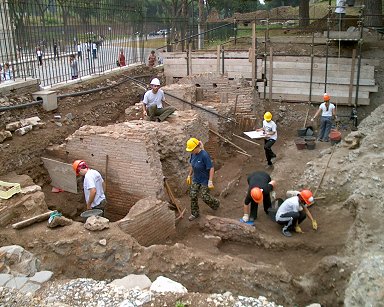You are a homeowner and most likely not a professional in updating homes, when your faucet decides to leak or your basement floods. Some things can be handled easier than you think and can be fixed without emptying your wallet. We’re excited to present to you part 1 of 10 things to help you conquer homeownership.

1. Fixing the Faucet Leak
You might blame the faucet for leaking but it’s most likely the washer inside. The rubber washer breaks down after some time and needs to be replaced with a new one. The first thing you should do when you are replacing a washer is to turn off the water supply. The water supply valve is located underneath the sink. Stuff a rag or a small hand towel into the drain. This will keep you from losing any parts when taking the handle off. To remove the handle you must take the screw cover off the top first. Use a wrench to disassemble the stem. Make sure to place all the parts in front of you in the order of which you took them apart; this way you will know the order in which you need to put them back together. Once you have all the parts in front of you, examine the rubber and plastic parts for cracks or any damage and take that part to your local hardware store for an exact replacement. Once you have that just put everything back in reverse order. No more annoying sounds and increased water expenses!

2. Hanging a Chandelier
Okay, so maybe that light fixture is a bit outdated and you want something a little more into this century. Electrical devices in your home have two lines where one of the lines brings electricity while the other sends it back. The one that brings electricity is the hot wire and the one that sends it back is the neutral wire. All electrical devices have a current that makes a full circuit to and from the main box therefore two lines are needed to make that current flow. Hot wires connect with hot wires while neutral wires connect with neutral wires.
To make a quick distinction from the two: hot wires are usually black while neutral wires are commonly white. If your wires do not have those colors then use a circuit tester which has two nodules for testing electricity. Turn the electricity on and connect one nodule to a wire and the other nodule to anything metal that is not connected or in contact with your body. If the light on the circuit tester turns on, then that means it is your hot wire. Now you can connect the hot wire with the black hot wire in your chandelier and the neutral wire with the white wire in your chandelier. If, for instance, the light fixture has wires with colors different from black and white, then check to see which one is striped with ridges or grooved. The grooved one is the neutral wire. After you connect the hot wires and neutral wires, connect the copper grounding wires. The copper grounding wire from the ceiling connects to the grounding screw first; located in the junction box in the ceiling. The junction box is the container in the ceiling which holds wires. Now you are finished and have a new light fixture!
3. Finding that Stud
You want to hang up curtains but you do not have an electronic stud finder and knuckling at the wall is too risky.
Start at the corner of the room. There are always studs in the corners of the rooms. You can also remove an electrical outlet cover to see on which side of the stud the electrical outlet was connected to. From there you count 16 inches. 16 inches is the standard distance between studs therefore at 16 inches you should hit another stud. Then measure another 16 and so forth until you arrive at your desired area. If you dislike the idea of guessing, just drill a thin bit drill and see if you hit a stud. If there isn’t one, no worries, this can be easily fixed with a tiny dab of caulk.

4. Hanging Objects on Drywall
Okay, so after measuring 16 inches from the corner of the room, you now see that there is no stud in your desired area for those curtains.
Before you start reaching for the plastic cone anchors, understand that those cone shaped anchors are meant for plaster, not a wallboard such as drywall and although they are often used, they are meant for lighter objects such as picture frames and smaller shelves.
A toggle bolt does the trick. Toggle bolts have the best support for drywall due to their wings. Once the wings go through the drywall they open up and secure against the wall to hold the heavy object. It is easy as that!
5. Fixing a Stiff or Seized Lock
Maybe your house is not brand new and your key that always fit the lock now does not.
Before you call the locksmith consider using WD-40: a type of oil that penetrates and displaces water, because a locksmith can be expensive at times. Spray the WD-40 into the lock. This helps the components of the lock to lubricate which usually solves the problem. If the problem is not fixed then you know it is probably a spring or a pin tumbler or something a bit more complicated and in this case calling a professional is an ideal solution. Make sure, that once you have a new lock installed, to give it an annual spray of Teflon spray to prevent future stiff or seized locks.
Some things in your home can be fixed easier than you might think and getting your hands on it yourself can help you save on expenses! The great news is that you don’t have to be a professional to conquer these home updates or issues that you face as a homeowner. Stay tuned for the next 5 things that can help you conquer homeownership!
Hi! I’m Maria, the Marketing Coordinator for Homes.com. I am part of a dream team that is dedicated to running this awesome blog along with Homes.com’s social channels. If I am not busy writing blogs and socially sharing for Homes.com, you can find me painting, drinking tea with my friends, and doing DIY projects!

















